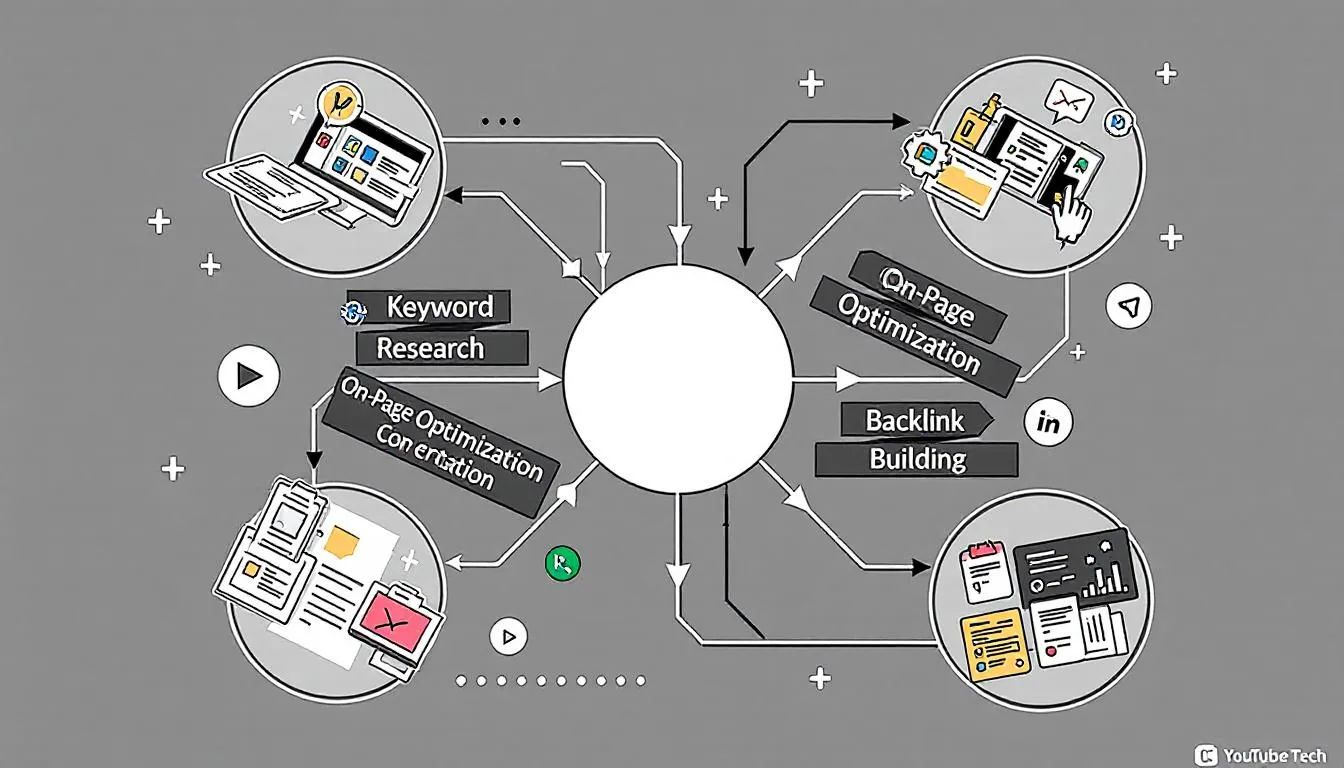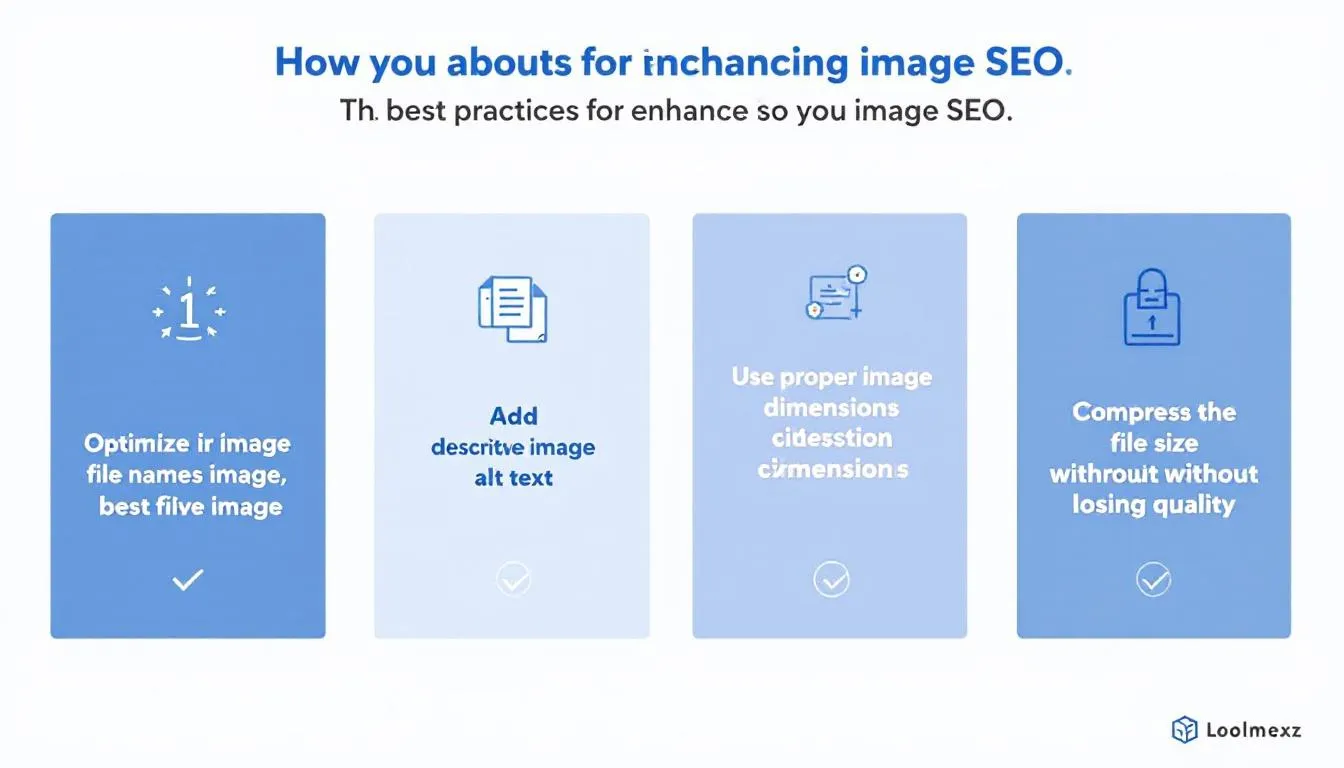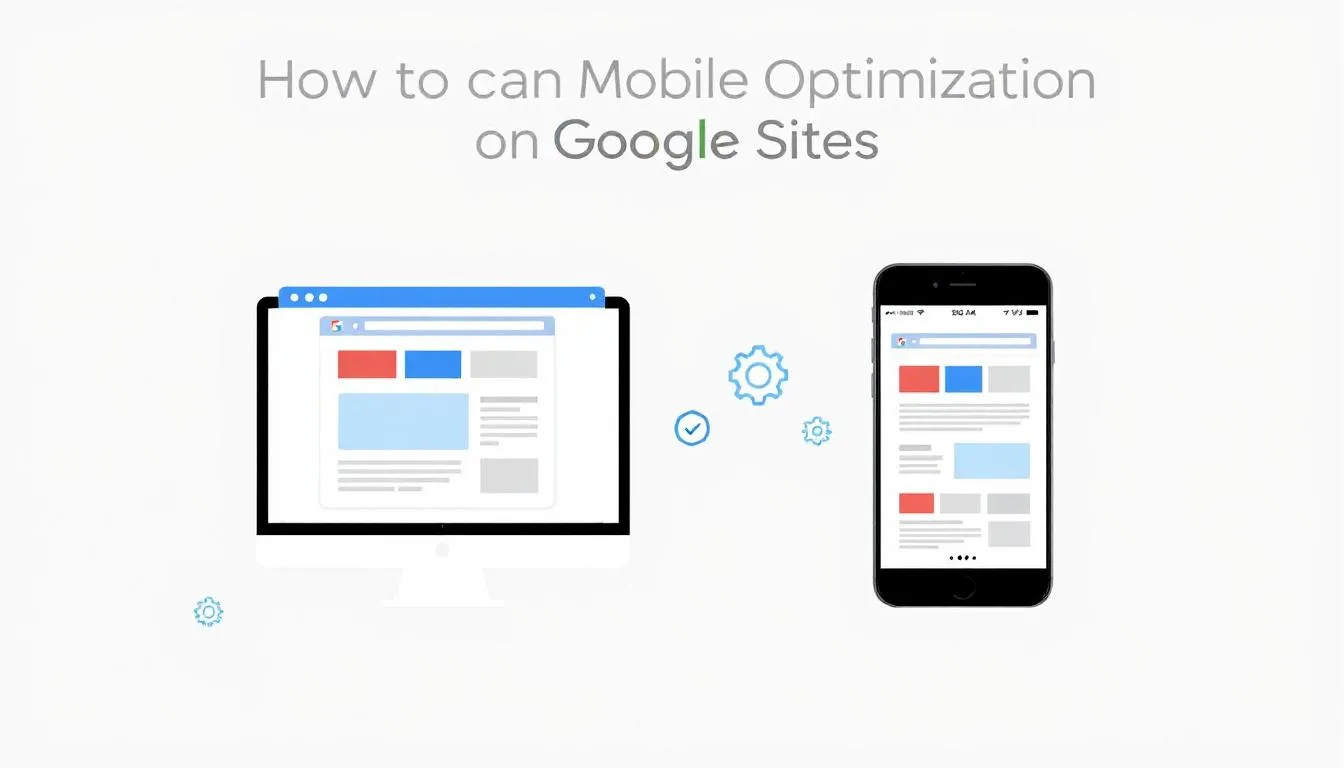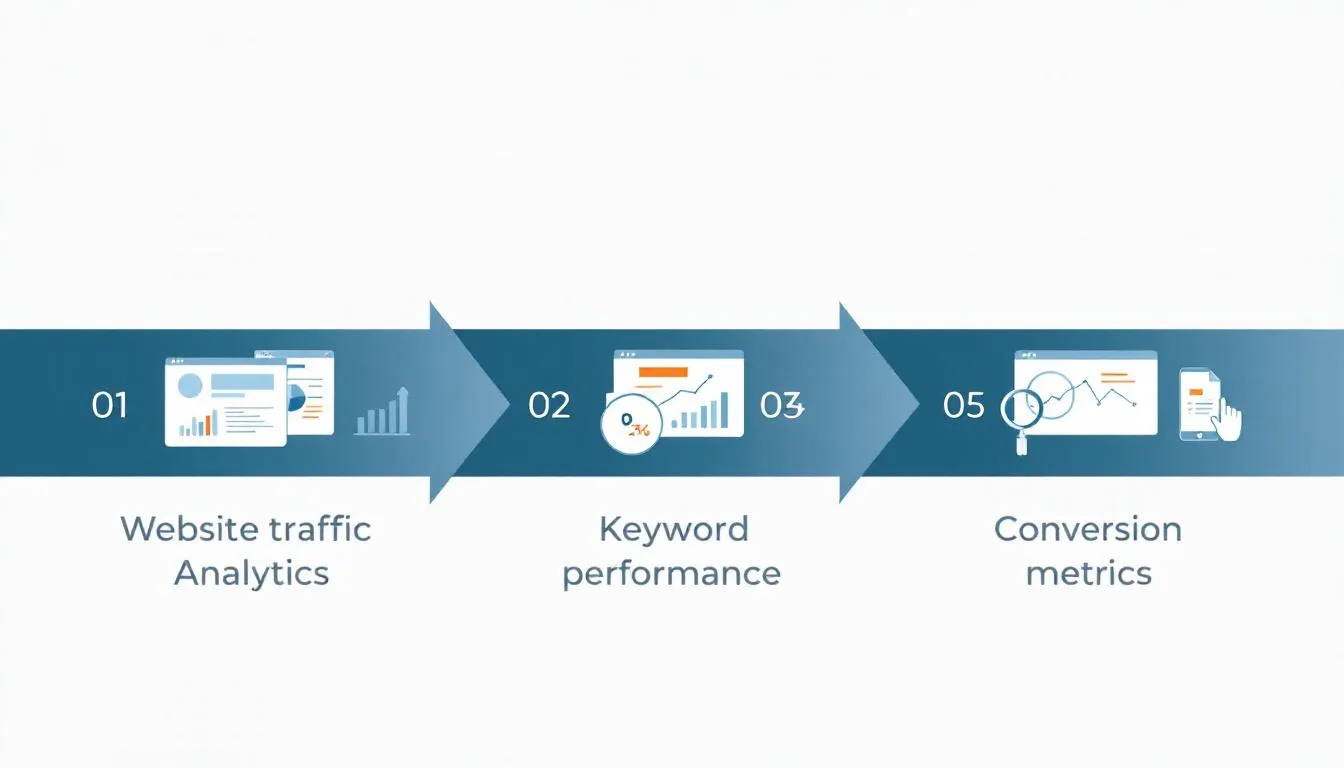Key Takeaways
- Optimize titles and content structure to improve search engine visibility and user engagement.
- Create unique, relevant content that resonates with your audience to naturally enhance SEO performance.
- Utilize tools like Google Search Console and Google Analytics for insights that can refine and elevate your SEO strategies.
Understanding Google Sites SEO

Google Sites offers an easy-to-use platform that integrates seamlessly with other Google services, making it an excellent choice for simple website creation compared to other website builders. However, despite its user-friendly interface, new google sites has its limitations in customization, which can affect its SEO capabilities. Implementing effective google sites seo friendly practices is crucial to enhancing your site’s visibility and improving your google sites rank. Additionally, creating a google sites page can further streamline your website management, as outlined in google search central. Google’s practices can also help optimize your site further, especially when considering ranking sites. Google Sites websites can be a valuable tool for those looking to enhance their online presence.
SEO is critical for improving website’s visibility and attracting organic traffic to your Google Sites website for seo purposes. Key components that contribute significantly to SEO performance include SEO tips:
- Relevant titles
- Well-structured content
- Optimized images Optimizing these elements ensures search engines index your site properly, ultimately improving your website’s ranking on search engine results pages.
Optimize Your Site Titles and Page Titles
The site title is your first chance to make an impression. It identifies your brand or primary service and helps users and crawlers recognize your site’s purpose. Relevant keywords in your site and page titles significantly enhance visibility in search results. Unique and descriptive page titles signify to Google that each page offers distinct value.
Page titles should ideally:
- Be under 60 characters to avoid truncation in search engine results pages.
- Use separators like hyphens or pipes to improve readability and appeal.
- Be descriptive to help Google understand page content, influencing click-through rates.
Your titles are the first touchpoint with potential visitors; make them count.
Craft Unique and Relevant Content
Creating unique and relevant content is the cornerstone of effective SEO. Content that is engaging and useful not only attracts visitors but also significantly influences search visibility. Use the language of your audience and avoid insider jargon to make your site more seo friendly and engaging.
To ensure your content resonates with your audience and helps them stay informed:
- Gather user preferences and research frequently asked questions and tutorials related to your niche.
- Edit content for relevance to real people before you publish on Google Sites.
- Focus on high-quality, valuable content to naturally attract more visitors and improve your site’s SEO performance.
Structuring Your Content for Better SEO

The structure of your content plays a crucial role in its SEO effectiveness. To enhance readability and support SEO, consider the following:
- Use compelling headlines and subheadings to organize content.
- Utilize various heading levels (h1, h2, h3) supported by Google Sites.
- Break content into digestible sections for better understanding by search engines.
Incorporate bulleted or numbered lists to break up large blocks of text and make relevant information easier to digest. Short paragraphs enhance user engagement by preventing visitors from feeling overwhelmed by dense text. Effective content organization significantly impacts how search engines crawl and index your site.
Key points to consider:
- Use bulleted or numbered lists to break up large blocks of text.
- Keep paragraphs short to enhance user engagement.
- Organize content effectively to improve search engine crawling and indexing.
URL Optimization Strategies
Optimizing your URLs is a key aspect of improving your site’s SEO. Descriptive URLs help users understand the relevance of a page before clicking on it. Page names should be descriptive as they often appear in search results and should clearly describe the main purpose of the page.
In Google Sites, you can customize URL slugs using page properties, which allows you to include relevant keywords and descriptions. Custom domain URLs enhance your web site’s pages visibility and credibility in Google’s search results.
Consistent URL structure across your site improves crawl efficiency and indexing.
Enhancing Image SEO

Images are an integral part of any website, but they need to be optimized for SEO to be effective. Alt text helps search engines understand the image and improves overall visibility. Use descriptive filenames to improve search engine understanding and indexing, and ensure you include image alt text for better results.
Implementing the WebP image format can significantly enhance loading times due to its efficient compression. Google supports several image formats, including JPEG, PNG, and SVG, which should match the file extensions used. Optimized images for compression and proper formats enhance mobile rendering and improve user experience.
Leveraging Google Search Console
Google Search Console is an indispensable tool for analyzing and improving your site’s SEO performance. It provides valuable insights into traffic metrics and helps identify issues affecting your site. The URL Inspection tool offers deep insights into how Google indexes and serves your pages, helping you make necessary adjustments.
Submitting sitemaps via Google Search Console expedites the crawling and indexing process. The performance reports available in Search Console help you understand which search queries lead to site visits, allowing you to refine your SEO strategies effectively.
Implementing Keywords Effectively
Keyword research is the foundation of any successful SEO strategy. Relevant keywords and trends significantly enhance your site’s ranking. Tools like Semrush and Ubersuggest can help discover valuable insights into trending keyphrases and related queries.
To enhance visibility, consider the following SEO strategies:
- Strategically incorporate keywords in headings.
- Use keywords in URLs and throughout the content.
- Create unique meta descriptions for each page to further optimize your site’s performance on search engines.
- Leverage dedicated SEO tools to simplify keyword queries and enhance your overall SEO strategy.
Building Quality Backlinks
Backlinks from reputable websites serve as endorsements, significantly improving your site’s trustworthiness and SEO ranking. Effective SEO strategies focus on building links from other websites to enhance your site’s authority.
Unique, high-quality content naturally attracts backlinks from other sites. Promoting new content, guest posting, and creating valuable resources like videos and infographics speed up discovery and boost your SEO efforts.
Mobile Optimization on Google Sites

In today’s mobile-first world, optimizing your Google Sites for mobile devices is non-negotiable. Google prioritizes mobile versions for indexing and ranking, making mobile-friendly design essential. Google Sites offers mobile-responsive themes that adapt to various screen sizes, ensuring a consistent experience.
A mobile-first design approach enhances user experience on mobile devices. Preview your site on various mobile devices to ensure seamless performance and use a Content Delivery Network (CDN) to improve load times on the internet.
Improving Page Speed
Page speed is crucial for user experience. It also significantly impacts search engine rankings. To improve page speed, compress images, minimize formats, and eliminate excess content such as ads and intrusive pop-ups. High-quality images attract visitors but can increase load time, so optimization is crucial.
Minifying CSS and JavaScript files can reduce the overall size of your website, thus improving speed. Leveraging browser caching can speed up load times for repeat visitors by storing certain elements locally, which is essential for optimizing core web vitals.
Optimizing design and content also plays a significant role in enhancing page loading times and improving the website’s performance.
Utilizing Google Analytics

Google Analytics is a powerful tool for tracking and improving your site’s SEO performance. First, create an Analytics account. After that, obtain a Property ID to integrate into your Google Site. Data from Google Analytics can take up to 24 hours to start appearing after setup.
Tracking visitor statistics and understanding traffic sources refines your SEO efforts. Errors found in audit reports can help identify significant SEO issues that need addressing.
With Good Solutions by your side, you can harness the full potential of Google Analytics to enhance your site’s visibility and performance.
Creating and Submitting XML Sitemaps
XML sitemaps are essential for effective indexing and crawling by search engines. Custom XML sitemaps provide detailed control over indexing by allowing you to exclude specific pages or specify priority. Google Sites currently does not generate an XML sitemap automatically, so users need to create one using third-party tools.
Submit XML sitemaps and individual URLs via Google Search Console for quicker crawling. Ensure that sitemaps contain fully-qualified URLs instead of relative paths for effective indexing.
Good Solutions can assist you in creating and submitting these sitemaps, ensuring your site is properly indexed and visible.
Overcoming Common Google Sites SEO Challenges
Google Sites presents several SEO challenges, including:
- Limited control over meta tags, headers, and URL structure.
- Inability to add custom meta tags, requiring users to rely heavily on content organization and other SEO strategies.
- Google Search does not utilize meta description tags from Google Sites, limiting search visibility.
Utilize a canonical URL to prevent duplicate content issues and ensure a single authoritative URL for each content piece, following best practices. Good Solutions can help you navigate these challenges and implement strategies to enhance your site’s SEO performance.
Summary
In summary, optimizing your Google Sites for SEO involves a combination of strategic content creation, effective use of titles and keywords, and technical enhancements like improving page speed and mobile optimization. By implementing these tips, you can significantly enhance your site’s visibility and attract more organic traffic.
Remember, SEO is an ongoing process that requires regular updates and adjustments. Stay committed to improving your site and leveraging the tools and strategies discussed in this guide. With persistence and the right approach, your Google Sites can achieve higher rankings and greater success.
Frequently Asked Questions
How do I optimize my Google Sites for SEO?
To optimize your Google Sites for SEO, focus on creating relevant titles, unique content, and well-structured pages while also optimizing your URLs. Utilize tools like Google Search Console and Google Analytics to track your progress and make informed improvements.
Can I use custom URLs with Google Sites?
Absolutely! You can use custom domain URLs with Google Sites, boosting your site’s visibility and credibility. Go ahead and make your site stand out!
How can I improve the mobile performance of my Google Sites?
To boost the mobile performance of your Google Sites, use mobile-responsive themes and regularly preview how your site looks on different devices. Don’t forget to implement a CDN for faster load times—your visitors will appreciate the difference!
What role does Google Analytics play in SEO?
Google Analytics is crucial for SEO as it helps you track visitor behavior, understand where your traffic comes from, and identify any SEO issues to improve your website’s performance. By leveraging these insights, you can enhance your strategies and boost your search engine ranking!
Why are XML sitemaps important for Google Sites?
XML sitemaps are essential for Google Sites because they help search engines understand your content better, leading to improved visibility and indexing. Embrace this tool to elevate your site’s reach!
#GoogleSitesSEO #SEOTips #ImproveRanking #ContentStrategy #TitleOptimization #StructuredContent #ImageSEO #AltText #WebP #SearchConsole #URLOptimization #KeywordStrategy #MetaDescriptions #Backlinks #MobileOptimization #ResponsiveDesign #PageSpeed #CompressImages #MinifyCSS #BrowserCaching #GoogleAnalytics #XMLSitemap #SEOChallenges #CanonicalURL #Indexing #SEOTools #OrganicTraffic #GoodSolutionsTech #WebsiteOptimization #SearchEngineRanking
